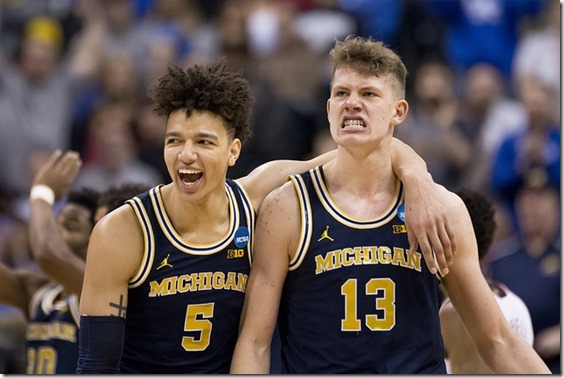hard decisions made easy [Marc-Gregor Campredon]
One-and-done has been an ongoing farce since its implementation for various reasons, but it seems like it may finally, finally, finally not be long for this world. NBA commissioner Adam Silver has bashed the current state of NBA draft eligibility in two separate forums over the past week. One was an interview with Colin Cowherd:
“It may surprise you, but I’m rethinking our position.
"Our historical position since we raised the age from 18 to 19 was that we want to go from 19 to 20, and the union’s position is they want to go from 19 to 18. …
"…. These young men, they’re followed so closely from the time they’re 13 or 14 on. They’re at the major shoe companies’ summer camps. They’re being watched closely by the league, by the college scouts. And so when they get to [college], now they’re in a unique situation. Talk about resting in the NBA, all of a sudden now they realize, even though they can buy insurance, their biggest concern, unfortunately, becomes not whether they can win the NCAA tournament, but whether they drop in the NBA Draft. So then they have to be worried about how their skills are showcased, how many minutes they get, whether they get injured. It’s not a great dynamic.”
Silver re-iterated that take in front of the press yesterday, stating that one and done was "not working for anyone."
Now, this sort of thing has been going on for years and years. Here's Mark Cuban complaining about one and done in 2012:
Stern said Tuesday that he'd like to add a year to the rule. Cuban wants to take it a step further, requiring players to wait three years after their high school class graduates to become draft-eligible.
"I just think there's every good reason to do it, which is obviously why we didn't do it," Cuban said sarcastically, adding that Kentucky fans were the only people who like the one-and-done concept.
There is a shift in tone here. Over the last five years the commissioner of the NBA has gone from supporting more restrictions to supporting fewer. Whether this is a push for the D-League to become relevant (not bloody likely) or a belated realization that restricting the economic freedom of guys who would be lottery picks out of high school doesn't help anyone isn't relevant. The NBA draft model is seemingly set to change.
When changes to the NBA draft come up, a lot of people mention baseball's zero-or-at-least-three model, but that's the wrong league to take your cues from. I wrote about this in 2012: the NBA should look to the NHL. The NHL auto-enrolls anyone vaguely draftable at age 18, which allows NCAA players to retain their eligibility despite the fact that they went to Phoenix in the third round. Players then negotiate with their clubs as to when they'll turn pro. This prevents players from burning their NCAA eligibility on a pipe dream, which is the whole reason one-and-done came into existence in the first place.
There are three main flaws with the current NHL system: the entry-level contract is based on when you sign and not how old you are, teams lose their rights a few months after a senior graduates, and teams can sign kids without committing a big-league roster spot to them. This results in guys signing early to get their ELC out of the way and NHL teams signing them so that they don't lose their rights*. The NHL teams can shove them into the AHL anyway.
*[An example of what NHL teams strive to avoid: Panthers draft pick Zach Hyman graduated from Michigan as a Hobey Baker finalist and announced his intent to become a free agent. He wanted to join Toronto and the Panthers traded for him for pennies on the dollar.]
An ideal NBA draft system is in that 2012 post. In a nutshell:
- Everyone relevant is auto-entered in the draft at 18, and 19 and 20 if they are passed over.
- The NBA team retains the drafted player's rights until one year after his college eligibility expires.
- A drafted player can be signed at any time. The contract lasts until the player is 23 and the NBA team in question commits to carrying that player on their roster for the duration of that contract. Graduated seniors are an exception to the roster rule.
- The NCAA and NBA come to some sort of agreement where the NBA team can have him in summer league and maybe sign him to some sort of pre-contract that gives the kid some spending money.
Lebron can go to the league and guys only leave college at the point where their NBA team thinks they're worthy of a big-league roster spot. That would seem to be the most sensible arrangement for everyone.
